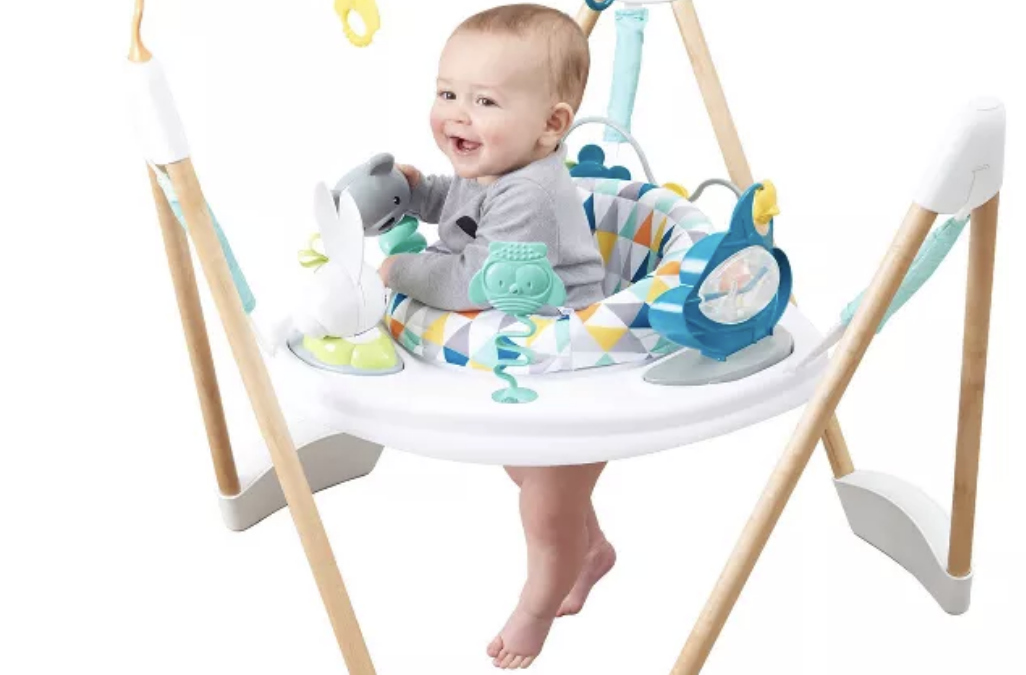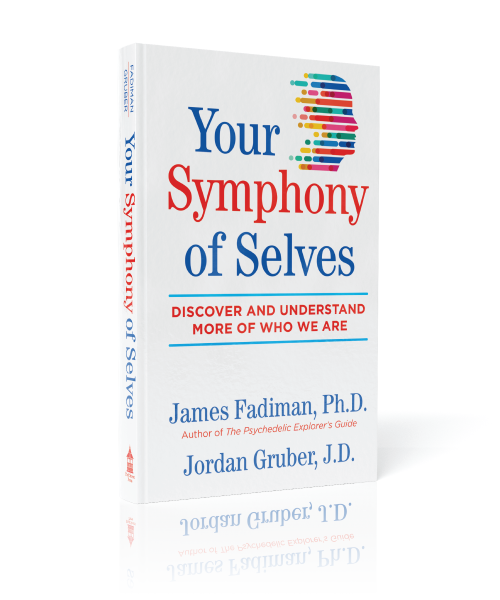What has happened to the young people of our modern world? So many babies and young children start out life just as humans always have: happy, curious, and excited about every little thing—energetic and active. But by the time they become teenagers, so very many kids seem to spend the majority of their time in front of electronic screens, barely moving at all.
Children naturally love to be active: life is an exciting adventure from day one. Craving movement, humans wiggle and kick as wee babies, then crawl, then stand as soon as we can. We learn to walk, and then we start running.
For decades many parents have had Jolly Jumpers in their homes for their babies to hang out in and Bounce in before they can even walk. If you have ever observed a baby enjoying the ability to be upright and jump up and down in one of those suspended harnesses, you know how much fun they are having!
These days, one of the most favored contraptions I see a lot of parents providing their young children with is called an ExerSaucer, a mobile seat with a tray, on wheels, with lots of fun activity learning toys hanging within reach for baby to tug and press buttons that make sounds and lights and music. And it also has a suspended seat that lets baby Bounce a bit! With one of these, Baby spends happy times safely hanging out next to grown-ups and older children, while exercising their minds and their bodies.
Children generally find a way to always be on the move, engaged in active play with their friends. After bouncing as babies, what comes next for most kids? That’s right, bouncing on beds! Same as it’s ever been, for generations.
So, what has changed? How do so many of us transition from energetic babies and young children to physically lazy adults?
Part of the puzzle is that since the invention of television—the first screen—both children and adults have drifted into being easily entertained while sitting still. Now add in computers, Nintendo (and onward to ever more amazing and engrossing gaming machines), and our smartphones. The amazing devices that are now in every part of our lives have taken most of us further down the road to moving little else than our hands and wrists.
Whether your teenager is an academic marvel (study, study, study, bent over that desk), a bit of a slacker (glued to the couch, playing one video game after another), or is on the road to being a lifetime TV/vid/meme addict (more pop and salty snacks please?), what should most concern you is that daily, active, regular physical movement has lessened so dramatically across the boards. Almost all kids everywhere are moving less now than they did in previous generations, and that’s a huge problem, since the habits we form in the pivotal years of our youth tend to stick with us for the rest of our lives.
Of course, this is not the case for everyone. There are still some kids, teenagers, and grown-ups who absolutely love to be physically active—who experience robust movement as part of what it means to be fully human. Some elderly folks are also remarkable in how they chose to stay active and fit. But again, this is already the great exception, and things are becoming worse all the time. (It will be interesting to see the ultimate impact of the Pandemic on how much people of all ages move.)
A critical question, then, is what might be done to help those kids who are not naturally inclined to remain active as they grow older? What do we do when a teenager is not involved in team sports (which was the case for me personally), hates PE gym class, and has a natural inclination to moving as little as possible? How can we make it attractive and easy for such kids, and all kids, and kids of all ages, to incorporate regular fitness activity into their daily lives?
You might have already guessed at what our suggestion would be. And yes, you have guessed correctly! Get a quality rebounder, and start a regular family Bounce Practice.
And begin as early as you can. Capture your child’s interest in using a rebounder for fun and fitness while they’re still young enough that it is easy to do. Set a good example by making a habit of fitting in some quality Bounce time for you as well. Make it a family activity, even if for safety purposes you should only have one person on at a time.
What about purchasing a larger backyard outdoors trampoline, as many families do? Their kids are absolutely thrilled—so much fun!—and usually such big backyard trampolines gets a lot of use, although typically only by the kids in the family…at least at first.
It’s important to note that there are indeed substantial concerns involving safety with these larger outdoor trampolines. Google it yourself: there are many documented occasions of slight-to-serious injury on big trampolines, and the American Academy of Pediatrics has a long-term warning out against them. Or just check YouTube for “Trampoline ‘Fail’” videos. Very funny to watch, perhaps, but not so funny to experience. (Since you can’t really do stunts on a Rebounder, while it is still possible to hurt yourself, the risk is far, far less. No seat drops, no flips, no landing on your side and neck.)
Another thing to consider is that outdoor trampolines tend to be a bit of a novelty item. Far too many families see their backyard trampolines ultimately rusting away in the backyard. Even when brand new, few people actually use them as a regular exercise tool. And if you live in a part of the country with winter weather, even if you do use that big trampoline a lot, for half the year you can’t.
However, the popularity of these big trampolines illustrates that humans, of all ages, do love to Bounce. We are here to remind you that there is a safe, useful, year round (indoor AND outdoor) alternative (or addition) to those big trampolines. Choosing to get a good quality Rebounder for family use is something well worth considering.
Of course, young children need to be always supervised when using a rebounder—that simply makes common sense. And our suggestion is that if you chose to buy a rebounder that has attachable holding bars for aiding balance, you should remove them before your children use the unit. Otherwise you might find the bars get climbed on, or swung upon as if they were playground equipment. *Not* a good idea. Safety First!
(Also, just so you know, as far as we’re concerned, the use of those attachable bars is useful for frail folks, the very elderly, and those with pre-existing medical grade balance or orthopedic issues. Other than that, we suggest you avoid using them, and find your own steady balance right from the start. It won`t take long to do so.)
Another group of folks who can benefit tremendously from rebounding is the elderly. As we age, most people become less and less physically active. Yet this is the period in our lives when it is most important to remain as fit as our age and health allows. Rebounding is a gentle, low impact method of regular exercise no matter how old you are.
Remember: you can still watch TV while on your rebounder. There need not be any drastic change in your accustomed home life activity. Thus your chance of immediate success in adding rebounding to your life is much greater. And once you try rebounding, chances are very good that you will really enjoy it!
Unlike so many other attempts people make to get into some sort of exercise program that never seem to last for long, you will very likely experience success through bouncing. You can listen to your favorite music, and you can chat on the phone or in the room with friends and family—or be in a Zoom session—all the while moving your body on your rebounder. You can get your daily exercise accomplished easily. You can succeed.
And so can your kids. Bouncing on a good rebounder is fun. Whether you are gently moving, just a little, or being highly energetic, it simply feels good to move. On rainy days, or during frigid winters, you will bless the fact that your kids can burn off excess energy in the comfort and safety of your home. What once was thought of as scheduled *break time* in between studying or playing video games will very likely become something looked forward to. It’s just a matter of choosing to fit rebounding into whatever else you do in your daily life.
An additional effect of rebounding that many people report experiencing is the emotional uplifting, mood calming, and happiness feeling effect. I sure wish that I’d discovered rebounding in my own teenage years. It would have mitigated alot of the moodiness that I (and most) teenagers deal with had I known I could just bounce it off on difficult days. There have even been recent studies reporting beneficial results for Autistic Spectrum children, teenagers, and adults who undertake regular movement on a bouncer. This is quite remarkable, and it’s very encouraging to discover another very effective therapeutic tool.
As parents, we all want to help our kids make good choices and be healthy and happy. The earlier you afford the kind of opportunity that the Bounce offers to your children, the better.
The “Secret to Success” here (a secret you’re more than welcome to share!) is that rebounding is both easy to incorporate into your and your family’s life, and so much fun at the same time. (It also provides a wide range of physical benefits, from aerobic conditioning and lymph system/immune support to improvements in balance, strength, and muscle tone.)
Give yourself and your children the Gift that keeps on Giving. Provide them with a way of becoming and staying healthier and happier for all the rest of your lives.
Rebounding … Works.


 Jordan Gruber, J.D., M.A., Practical Wordsmith and Renaissance Writer, collaborative writer, ghost writer, editor, and coach, has forged and sculpted authoritative volumes in forensic law, financial services, psychology, and health and wellness.
Jordan Gruber, J.D., M.A., Practical Wordsmith and Renaissance Writer, collaborative writer, ghost writer, editor, and coach, has forged and sculpted authoritative volumes in forensic law, financial services, psychology, and health and wellness.

